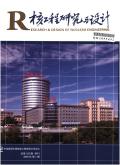Simulation of Severe Accident Progression Using ROSHNI: A New Integrated Simulation Code for PHWR Severe Accidents
引用次数: 0
Abstract
As analysts still grapple with understanding core damage accident progression at Three Mile Island and Fukushima that caught the nuclear industry off-guard once too many times, one notices the very limited detail with which the large reactor cores of these subject reactors have been modelled in their severe accident simulation code packages. At the same time, modelling of CANDU severe accidents have largely borrowed from and suffered from the limitations of the same LWR codes (see IAEA TECDOC 1727) whose applications to PHWRs have poorly caught critical PHWR design specifics and vulnerabilities. As a result, accident management measures that have been instituted at CANDU PHWRs, while meeting the important industry objective of publically seeming to be doing something about lessons learnt from say Fukushima and showing that the reactor designs are oh so close to perfect and the off-site consequences of severe accidents happily benign. Integrated PHWR severe accident progression and consequence assessment code ROSHNI can make a significant contribution to actual, practical understanding of severe accident progression in CANDU PHWRs, improving significantly on the other PHWR specific computer codes developed three decades ago when modeling decisions were constrained by limited computing power and poor understanding of and interest in severe core damage accidents. These codes force gross simplifications in reactor core modelling and do not adequately represent all the right CANDU core details, materials, fluids, vessels or phenomena. But they produce results that are familiar and palatable. They do, however to their credit, also excel in their computational speed, largely because they model and compute so little and with such un-necessary simplifications. ROSHNI sheds most previous modelling simplifications and represents each of the 380 channels, 4560 bundle, 37 elements in four concentric ring, Zircaloy clad fuel geometry, materials and fluids more faithfully in a 2000 MW(Th) CANDU6 reactor. It can be used easily for other PHWRs with different number of fuel channels and bundles per each channel. Each of horizontal PHWR reactor channels with all their bundles, fuel rings, sheaths, appendages, end fittings and feeders are modelled and in detail that reflects large across core differences. While other codes model at best a few hundred core fuel entities, thermo-chemical transient behaviour of about 73,000 different fuel channel entities within the core is considered by ROSHNI simultaneously along with other 15,000 or so other flow path segments. At each location all known thermo-chemical and hydraulic phenomena are computed. With such detail, ROSHNI is able to provide information on their progressive and parallel thermo-chemical contribution to accident progression and a more realistic fission product release source term that would belie the miniscule one (100 TBq of Cs-137 or 0.15% of core inventory) used by EMOs now in Canada on recommendation of our national regulator CNSC. ROSHNI has an advanced, more CANDU specific consideration of each bundle transitioning to a solid debris behaviour in the Calandria vessel without reverting to a simplified molten corium formulation that happily ignores interaction of debris with vessel welds, further vessel failures and energetic interactions. The code is able to follow behaviour of each fuel bundle following its disassembly from the fuel channel and thus demonstrate that the gross assumption of a core collapse made in some analyses is wrong and misleading. It is able to thus demonstrate that PHWR core disassembly is not only gradual, it will be also be incomplete with a large number of low power, peripheral fuel channels never disassembling under most credible scenarios. The code is designed to grow into and use its voluminous results in a severe accident simulator for operator training. It’s phenomenological models are able to examine design inadequacies / issues that affect accident progression and several simple to implement design improvements that have a profound effect on results. For example, an early pressure boundary failure due to inadequacy of heat sinks in a station blackout scenario can be examined along with the effect of improved and adequate over pressure protection. A best effort code such as ROSHNI can be instrumental in identifying the risk reduction benefits of undertaking certain design, operational and accidental management improvements for PHWRs, with some of the multi-unit ones handicapped by poor pressurizer placement and leaky containments with vulnerable materials, poor overpressure protection, ad-hoc mitigation measures and limited instrumentation common to all CANDUs. Case in point is the PSA supported design and installed number of Hydrogen recombiners that are neither for the right gas (designed mysteriously for H2 instead of D2) or its potential release quantity (they are sparse and will cause explosions). The paper presents ROSHNI results of simulations of a postulated station blackout scenario and sheds a light on the challenges ahead in minimizing risk from operation of these otherwise unique power reactors.基于ROSHNI的严重事故进展模拟:一种新的PHWR严重事故集成仿真代码
由于分析人士仍在努力理解三里岛和福岛核反应堆堆芯损坏事故的进展,这些事故曾多次让核工业猝不及防,人们注意到,这些反应堆的大型反应堆堆芯在严重事故模拟代码包中建模的细节非常有限。与此同时,CANDU严重事故的建模在很大程度上借鉴了相同的轻水堆规范(见IAEA TECDOC 1727),并受到其局限性的影响,这些规范在PHWR中的应用未能很好地抓住关键的PHWR设计细节和漏洞。因此,在CANDU PHWRs中制定的事故管理措施,一方面达到了重要的行业目标,即在公开场合似乎对从福岛核电站吸取的教训有所作为,并表明反应堆设计非常接近完美,严重事故的非现场后果令人愉快地良性发展。综合PHWR严重事故进展和后果评估代码ROSHNI可以对CANDU PHWR严重事故进展的实际、实际理解做出重大贡献,显著改进了30年前开发的其他PHWR特定计算机代码,当时建模决策受到有限的计算能力和对严重堆芯损坏事故的理解和兴趣的限制。这些规范强制简化堆芯建模,不能充分代表CANDU堆芯的所有细节、材料、流体、容器或现象。但它们产生的结果是熟悉和令人满意的。然而,值得赞扬的是,它们在计算速度上也表现出色,这主要是因为它们的建模和计算很少,而且进行了不必要的简化。ROSHNI摆脱了以往大多数模型的简化,更忠实地代表了一个2000兆瓦(Th) CANDU6反应堆中的380个通道、4560个束、四个同心环中的37个元素、锆合金包覆燃料几何形状、材料和流体。它可以很容易地用于其他具有不同数量的燃料通道和每个通道束的phwr。每个卧式PHWR反应堆通道及其所有束、燃料环、护套、附件、末端配件和进料器都进行了建模,并详细反映了堆芯之间的巨大差异。虽然其他规范最多只能模拟几百个堆芯燃料实体,但ROSHNI同时考虑了堆芯内约73,000个不同燃料通道实体的热化学瞬态行为,以及其他15,000个左右的其他流道段。在每个地点计算所有已知的热化学和水力现象。有了这些细节,ROSHNI能够提供有关它们对事故进展的渐进和平行热化学贡献的信息,以及一个更现实的裂变产物释放源项,该源项将与我们国家监管机构CNSC推荐的加拿大emo使用的极小的(100 TBq Cs-137或堆芯库存的0.15%)相一致。ROSHNI对Calandria容器中的每个束过渡到固体碎屑行为进行了更先进、更CANDU的具体考虑,而不会恢复到简化的熔融堆芯配方,这种配方很高兴地忽略了碎屑与容器焊缝的相互作用、进一步的容器故障和能量相互作用。该代码能够跟踪每个燃料束从燃料通道中拆卸后的行为,从而证明在某些分析中所作的堆芯坍塌的总体假设是错误的和误导性的。因此,它能够证明PHWR堆芯拆卸不仅是渐进的,而且在大多数可信的情况下,由于大量低功率的外围燃料通道永远不会拆卸,堆芯拆卸将是不完整的。该代码旨在成长为一个严重事故模拟器,并将其大量结果用于操作员培训。它的现象学模型能够检查影响事故进展的设计缺陷/问题,以及对结果产生深远影响的几个简单实施的设计改进。例如,在车站停电情况下,由于散热器不足而导致的早期压力边界失效可以与改进和适当的过压保护的效果一起检查。诸如ROSHNI之类的最佳努力规范有助于确定对PHWRs进行某些设计、操作和事故管理改进的风险降低效益,因为一些多单元的PHWRs由于稳压器位置不佳、易损材料的泄漏容器、过压保护不佳、临时缓解措施和所有candu共同的有限仪器而受到限制。一个典型的例子是PSA支持的设计和安装的氢气重组器的数量既不适合正确的气体(神秘地为H2而不是D2设计),也不适合其潜在的释放量(它们很稀疏,会导致爆炸)。 本文介绍了ROSHNI对假定的电站停电情景的模拟结果,并阐明了在将这些独特的动力反应堆的运行风险降至最低方面面临的挑战。
本文章由计算机程序翻译,如有差异,请以英文原文为准。
求助全文
约1分钟内获得全文
求助全文

 求助内容:
求助内容: 应助结果提醒方式:
应助结果提醒方式:


